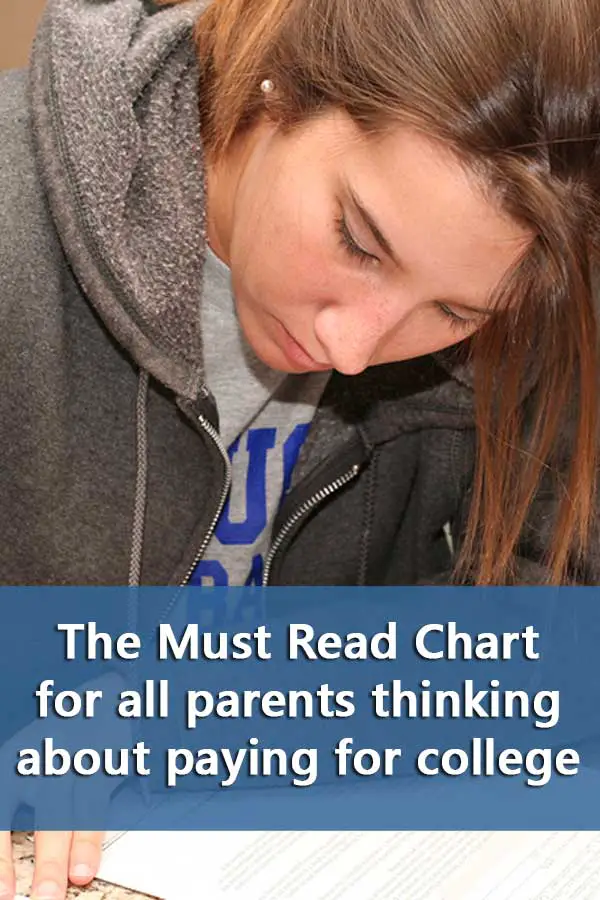 For the past few years, Troy Onink has had a Guide To FAFSA, CSS Profile, College Financial Aid And Expected Family Contribution at Forbes Magazine. It’s a great article that explains critical elements of the college financial aid process. I think the most valuable part of the guide is the Federal EFC Quick Reference Table. (Click here for an updated version of the EFC Chart with assets.)
For the past few years, Troy Onink has had a Guide To FAFSA, CSS Profile, College Financial Aid And Expected Family Contribution at Forbes Magazine. It’s a great article that explains critical elements of the college financial aid process. I think the most valuable part of the guide is the Federal EFC Quick Reference Table. (Click here for an updated version of the EFC Chart with assets.)
Actually, for the majority of people who are learning about financial aid for the first time, the EFC chart is probably the most shocking part. Families planning on sending their kids to college should take a look at this table just to start to understand what they’re facing.
This table is why I say any college search must begin with your EFC.
Join other parents in the Coffee Cup College Planning Facebook Group
Expect to pay at least the cost of going to your state flagship university
Now the EFC chart is only an estimate since it can’t possibly account for all the variation in financial assets and income. But I do think it shows one thing that all families with an income of over $100,000 need to understand–they’re expected to pay for the cost of attending a state public university.
I know that the table shows some families would qualify for some aid based on an average total cost of $28,000 for public universities. But given that public schools are even less likely to meet 100% of financial need than private schools, families with EFC’s of over $20,000 shouldn’t be counting on any help paying for a public university.
I’m not sure which is more shocking to families, their EFC or the fact that many state flagship universities are costing over $25,000.
Yet, once the shock subsides, families need to start considering if they even want to consider a private school. For families in the upper income category, it’s unlikely that even with the more generous financial aid from private schools, the total cost will fall below the price of their state flagship university.
(This isn’t true for those with lower EFC’s–it’s very possible for families with lower-income to pay less at a private school than a public school.)
Why consider a private college
But there are reasons why families might be willing to pay more than the cost of their state school to attend a private college. Private colleges are more likely to graduate their students in four years. They tend to have lower student to faculty ratios and spend more money on students in the classroom.
They can also cost at least twice as much as a public university. The question is can the financial aid offered by private schools bring the price down enough for families to decide to pass on the public option?
For some families and some private colleges, the answer is yes. Even for families with a high enough EFC that would limit the amount of need-based aid at even private colleges, merit scholarships can dramatically drop the total price.
Many private colleges offer yearly merit scholarships of $15,000 to a significant number of students. It’s not uncommon for the most qualified students to receive $20,000 merit awards.
If you just considered a $15,000 award that a merely desirable students might receive, the cost to attend a $50,000 drops to $35,000. That’s approximately $10,000 more than the average state university. And if the student is more likely to graduate in 4-years at the private college than at the public university, families might consider the private option.
Some colleges offer more money than others
The problem is finding those colleges most likely to offer such scholarships. Ultimately, you’ll never know how much money a college will award until you apply. But there are ways to target schools that are more likely to provide merit money than others. I’ve discussed how you can do this multiple times, including here, here, and here.
CONNECT WITH OTHER PARENTS PLANNING FOR COLLEGE
JOIN THE COFFEE CUP COLLEGE PLANNING FACEBOOK GROUP



4 thoughts on “The Must Read Chart for all Parents Thinking about Paying for College”